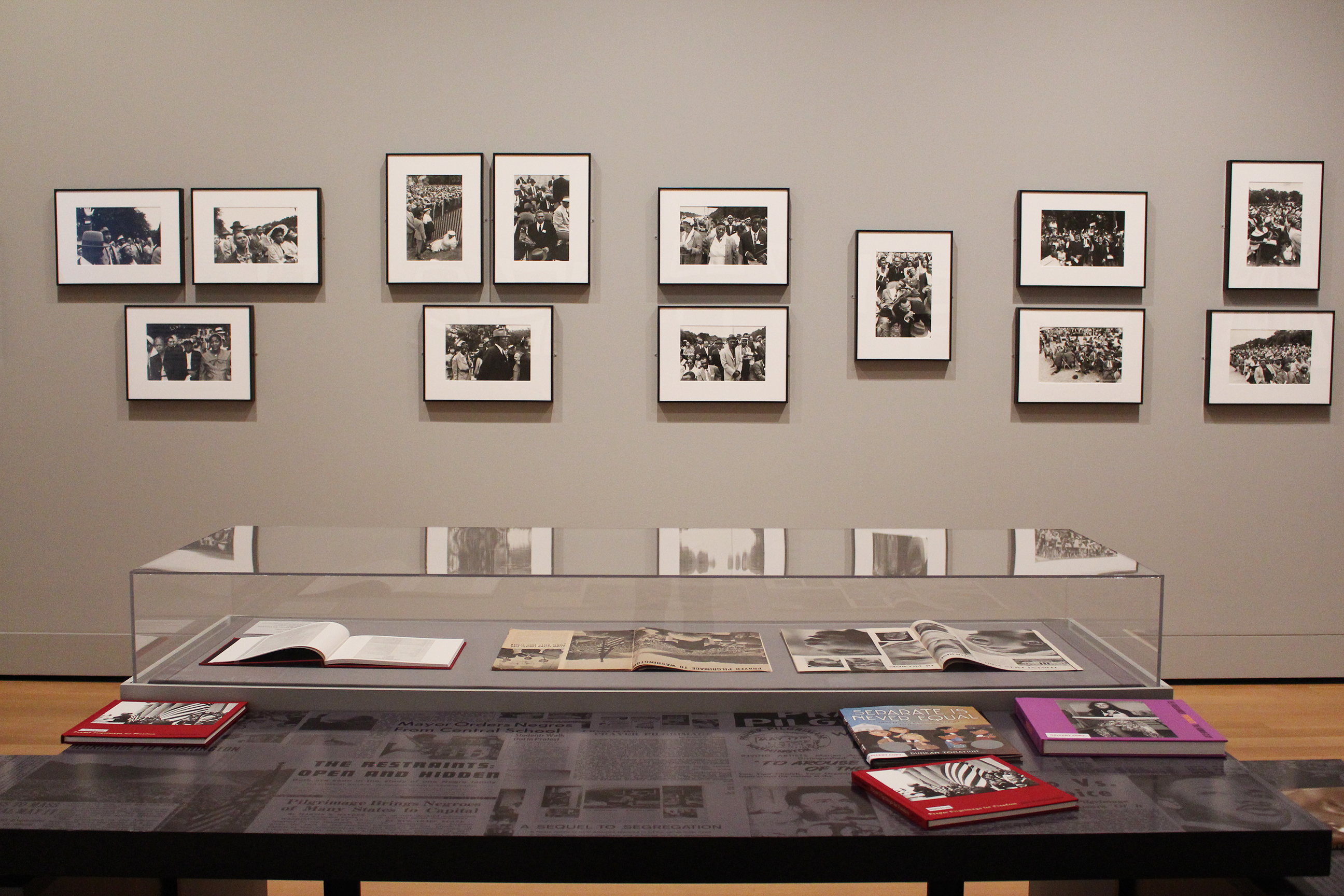
Faces, a crowd, a podium. In a quiet space in the Yale University Art Gallery, black-and-white images plaster the walls. Taken during the Prayer Pilgrimage of Freedom on May 17, 1957, these gelatin silver prints compose Lee Friedlander’s exhibition “Let Us March On”. In Friedlander’s photographs, African-American freedom fighters are decked in their Sunday best. Holding white ballots, triangular flags and newspapers, they gather at the National Mall to stand up to racial violence, segregation and voter suppression.
Here, you are everywhere at once. Friedlander works “on the edge,” a term referring to his practice of weaving through the masses. In some photographs, Friedlander is flanked by protesters, recreating for viewers the experience of being in the march. In others, Friedlander is on the steps of the Lincoln Memorial, as Mahalia Jackson and Ella Baker occupy the podium in front of him. Through Friedlander’s omnipresence, viewers inhabit all spaces. Friedlander transcends a singular frame, and allows audiences to enter a multitude of visual perspectives.
Friedlander plays with the camera’s gaze as he navigates the crowd. In one image, a Cub Scout stares right into the camera’s lens. His arms are crossed and brows furrowed. His gaze is assertive, almost rebellious. He is young, but there’s no tenderness in his disposition. We, as viewers, are confronted. Looking into the eyes of protesters, we wonder: Who are you? What injustices plague your heart?
The trope of the gaze has additional resonance at a time of pervasive racial segregation. Friedlander’s photographs bring to light African-American freedom fighters as they fill this national landmark. Yet, his images are self-reflexive: they highlight the act of looking and being looked at.
At this pilgrimage, Reverend Martin Luther King Jr delivers his speech “Give us the ballot”. In the silence of the gallery, you can almost imagine his words crescendoing. “Give us the ballot,” he says, an invocation clear and authoritative, “and we will no longer have to worry the federal government about our basic rights.” The plea at the core of this march is clear: we, equal human beings and citizens, deserve equal rights. Friedlander emphasizes this message by humanizing his subjects, placing them center stage.
In several images, protesters toe boundaries. Women sit perched on a curb. A man rests on a safety barricade. Men sit behind railings. Friedlander is sensitive to motifs of division. Yet, he endeavors to overstep them. In many ways, the march broke frontiers — a gathering of 27,000 was then unprecedented. It also celebrated the watershed Supreme Court decision “Brown v. Board of Education,” which outlawed segregation in public schools. Yet, Friedlander is cognizant of the barriers yet to be broken.
In the year of the Prayer Pilgrimage for Freedom’s 60th anniversary, Friedlander’s photographs remain relevant. In a divided political order, we seek solace in visual memories of the Pilgrimage, drawing courage from its participants. In his address during the Pilgrimage, King said, “Keep moving. Let nothing slow you up. Move on with dignity, love, and respectability.” Friedlander’s photographs are true to this call. They embody momentum, courage and community. And they invite us to ponder: What can we do to carry on this legacy, to tear barriers down, to stare exclusion in the eye and say, as defiant at the Cub Scout: we will not back down?







